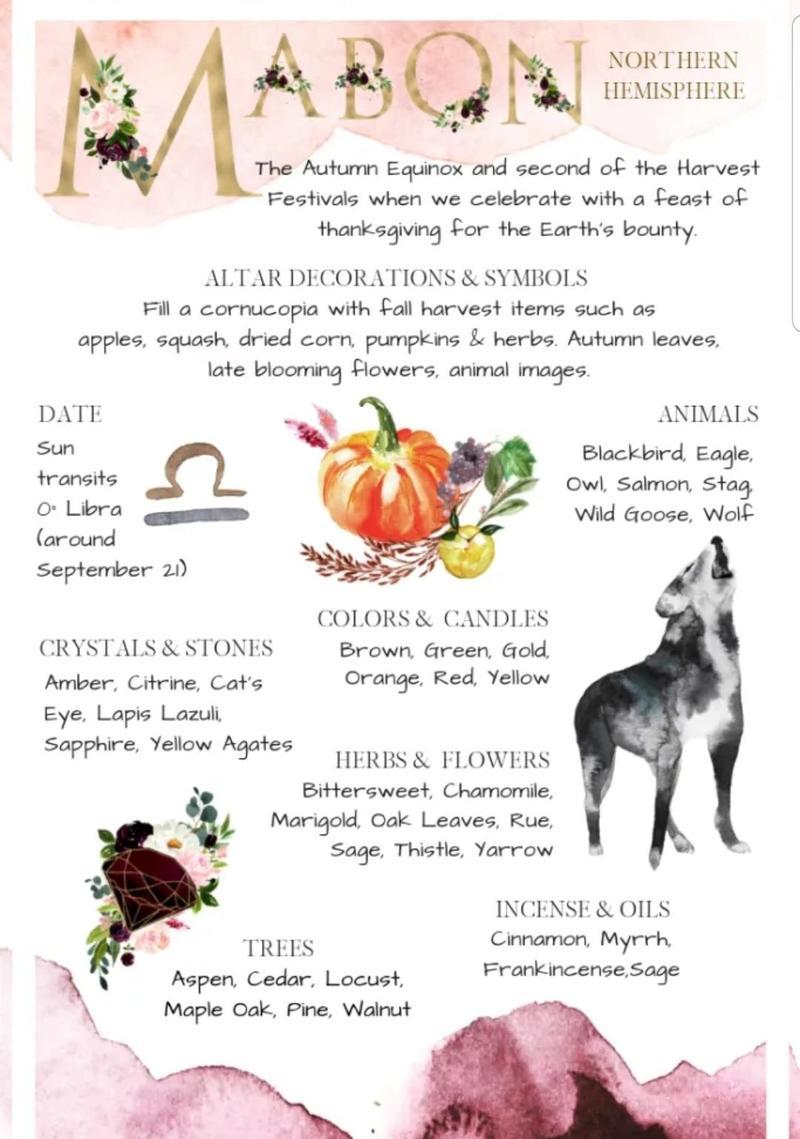"Embracing the Autumn Equinox: Unlocking the Magic of Mabon"
"Embracing the Autumn Equinox: Unlocking the Magic of Mabon"
Mabon, also known as the Autumn Equinox, is a traditional Celtic festival that celebrates the harvest and the balance between light and darkness. It is observed on or around September 21st and marks the beginning of autumn. Mabon has a rich history rooted in ancient pagan customs and beliefs. In this article, we will explore the origins, traditions, and significance of Mabon.
Origins of Mabon:
Mabon takes its name from Welsh mythology and is named after the figure of Mabon ap Modron, who was a divine child and a symbol of the harvest. The festival was celebrated by Celtic peoples, particularly in Wales, Ireland, and Scotland, to honor the changing seasons and give thanks for the abundance of the harvest. Mabon marks the midpoint between the summer solstice and the winter solstice and is a time of balance and reflection.
Harvest and Thanksgiving:
Mabon is closely associated with the harvest and the gathering of crops. It is a time to give thanks for the bounty of the earth and to celebrate the abundance of the harvest season. Fruits, vegetables, grains, and other agricultural products are displayed and shared, often in feasts and communal gatherings. It is a time to appreciate the hard work and the gifts provided by the land.
Balance of Light and Darkness:
Mabon occurs during the autumn equinox when the day and night are of equal length. It represents the balance between light and darkness, as well as the transition from the warmth and light of summer to the cooler and darker days of winter. Mabon is a time to acknowledge and honor this shift in energy and to find equilibrium within ourselves and in the natural world.
Autumnal Equinox:
The Autumn Equinox, which falls around the same time as Mabon, is an astronomical event that occurs when the sun crosses the celestial equator, resulting in equal lengths of day and night. This event marks the official beginning of autumn and is celebrated in various cultures around the world. Mabon is a pagan celebration that aligns with the themes and symbolism of the Autumn Equinox.
Nature's Transformation:
Mabon is a time to observe and appreciate the changing colors of the leaves, the falling of the seeds, and the shifting of the natural world. It is a reminder of the impermanence of life and the cycles of nature. Many Mabon rituals involve connecting with the earth and spending time in nature, whether through walks in the woods, gardening, or creating altars adorned with autumnal elements.
Feasts and Harvest Rituals:
Mabon is a time of feasting and celebration. It is common to prepare and share meals made from freshly harvested produce, such as apples, pumpkins, corn, and squashes. The feast often includes bread, cider, and other seasonal treats. Mabon rituals may also involve making offerings to the land and the spirits, expressing gratitude for the abundance received, and performing ceremonies to honor the deities associated with the harvest.
Influence of Christianity:
As with many pagan festivals, Mabon was later incorporated into Christian traditions. The Christian celebration of Michaelmas, observed on September 29th, also marks the beginning of autumn and is associated with the harvest. Many of the customs and symbols associated with Mabon, such as the feasting and the focus on gratitude, have persisted and continue to be part of modern Michaelmas festivities.
Modern Celebrations:
Today, Mabon is still celebrated by various pagan and neopagan communities as a time of harvest, balance, and gratitude. It is seen as a time to connect with nature, honor the changing seasons, and reflect on the harvests of the year, both literal and metaphorical. Modern Mabon rituals may involve creating altars, performing ceremonies to honor the harvest deities, participating in communal feasts, and engaging in activities that embrace the spirit of autumn.
Mabon is a festival deeply rooted in Celtic history and mythology. It represents a time of harvest, balance, and gratitude. The traditions and symbols associated with Mabon reflect a reverence for the changing seasons, the importance of balance, and the cycles of nature. Whether celebrated through ancient rituals or modern practices, Mabon continues to be a time of celebration, connection, and the honoring of the abundance and transformations of the autumn season.
Be the first to post a message!
